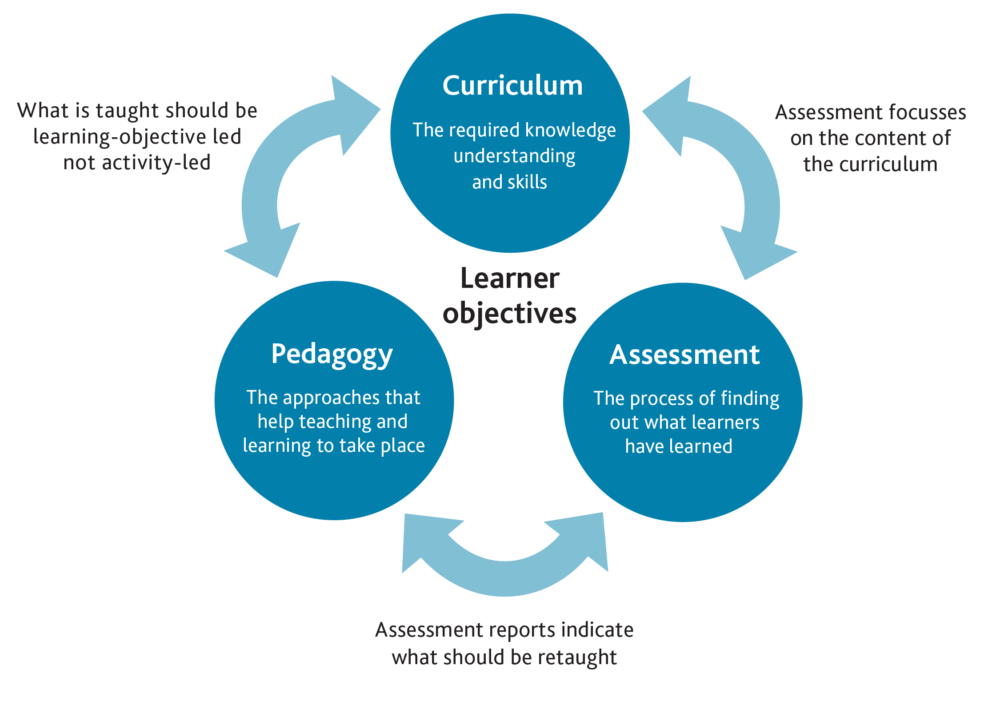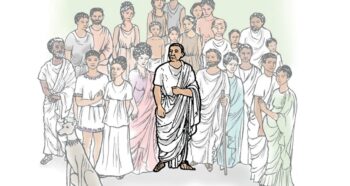In my December blog I explained Cambridge International’s robust curriculum progression model for our primary and lower secondary programmes (Stages 1 to 9, ages 5 to 14). Making sure that learners could progress smoothly was a key element of our work to redevelop these programmes, but it was only one element. Our model for developing curriculum coherence was equally robust.
In A Cambridge Approach to Improving Education: Using international insights to manage complexity, Oates (2017, p.18) explains that an education system is coherent “when the national curriculum content, textbooks, teaching content, pedagogy and assessment all are aligned and reinforce one another.” Extensive research between 1995 and 2017 by Bill Schmidt and William Prawat shows that high-performing education systems align their curriculum, textbooks, pedagogy and assessment.
Curriculum coherence can be viewed from a national, school and classroom level. Once a curriculum has been agreed at school and national level, teachers need to implement it in the classroom. In this blog, I want to explore curriculum coherence at the classroom level to show that our programmes are robust.
How do we ensure curriculum coherence?
The Cambridge Primary and Lower Secondary programmes embody curriculum coherence as we align and reinforce the relationships between our curriculum, endorsed textbooks, pedagogy and assessment. One way that we provide curriculum coherence as part of our curriculum design is by using the same learning objectives in our curriculum frameworks, endorsed textbooks, schemes of work and, formative (Cambridge Progression Tests), summative assessments (Cambridge Checkpoint) and assessment guidance (non-assessed subjects). It is our learning objectives that reinforce and connect all these aspects of the Cambridge Primary and Lower Secondary programme.
Our curriculum coherence model is broadly made up of three parts: curriculum, pedagogy and assessment.

1. Curriculum
The curriculum document that contains our learning objectives is critical to coherence because of its relationships to pedagogy and assessment. In the Cambridge Primary and Lower Secondary curricula the learning objectives are detailed in a logical sequence of concepts, content and skills across Stages 1 to 9 (age 5 to 14), so that learners can develop more sophisticated ways of thinking. Our support sites include a curriculum framework for each of our primary and lower secondary subjects. Our four endorsed textbook publishers also include all the learning objectives detailed in our curriculum frameworks.
2. Pedagogy
The second part of our coherence model relates to our active learning approach to teaching and learning which is exemplified in our teacher guides, schemes of work, Cambridge Global Perspectives™ challenges, endorsed resources and in our face-to-face and online professional development. It is the learning objectives, specified in our curriculum frameworks, that influence the suggested teaching and learning activities, promoting active engagement and thinking on the part of the learners. Using the same learning objectives throughout our curriculum frameworks and schemes of work strengthens curriculum coherence.
3. Assessment
The final part of our curriculum coherence model is assessment. We design our assessment questions based on the learning objectives taken from our curriculum frameworks. This applies to our formative (Cambridge Progression Tests), summative tests (Cambridge Checkpoint) and assessment guidance which are available on our primary and lower secondary support sites. This means that learners should not be surprised by assessment questions and can show the knowledge and skills that they have learned in lessons.
We also provide assessment reports that show which learning objectives learners found easy or difficult. This allows teachers to focus on students’ next steps of learning. For example, if the reporting shows that all learners found the same learning objective difficult then teachers can plan to reteach that concept or skill. If only one or two learners found it problematic, then, some focussed teaching for these students would be more appropriate.
What does this look like in practice?
Curriculum coherence applies to all ten Cambridge Primary and Lower Secondary subjects, so let’s take one example from our Cambridge Primary Mathematics curriculum to show the three parts of our coherence model: 1. Curriculum (Textbooks); 2. Pedagogy; and 3. Assessment.

In this example the Stage 4 learning objective, 4Np.02, is taken from our primary mathematics curriculum framework, Number strand, and requires learners to use knowledge of place value to multiply and divide whole numbers by 10 and 100.
The suggested activity in our scheme of work is written according to the learning objective, 4Np.02. So, it is the learning objective that determines the type of activity to be taught and not the other way around. The learning objective is then be reinforced by taking an active learning approach, using questions to engage learners in dialogic interactions with other students as well as with you.
Learners who have been taught 4Np.02 using an active learning approach should be able to answer any assessment questions about multiplying and dividing whole numbers by 10 and 100 correctly: for example, 363 x 10 = ; and 64 000 ÷ 10 =.
How does our curriculum coherence model help teachers and learners?
Using coherence as part of our curriculum design makes our primary and lower secondary programme robust because learners can make connections between the content and skills they are learning and what they are asked in our assessments. This robustness also means that the reporting from Cambridge Progression Tests and Checkpoint assessments can be used to focus teaching and learning on areas that are problematic for the whole class or individual learners.
If you are a registered Cambridge school, you can find Cambridge Primary and Lower Secondary subject-specific curriculum coherence models on our support sites in our “Guide to” section. https://primary.cambridgeinternational.org/ and https://lowersecondary.cambridgeinternational.org/
If you are not already registered with us but would like more information about these programmes, please enter your details here.





